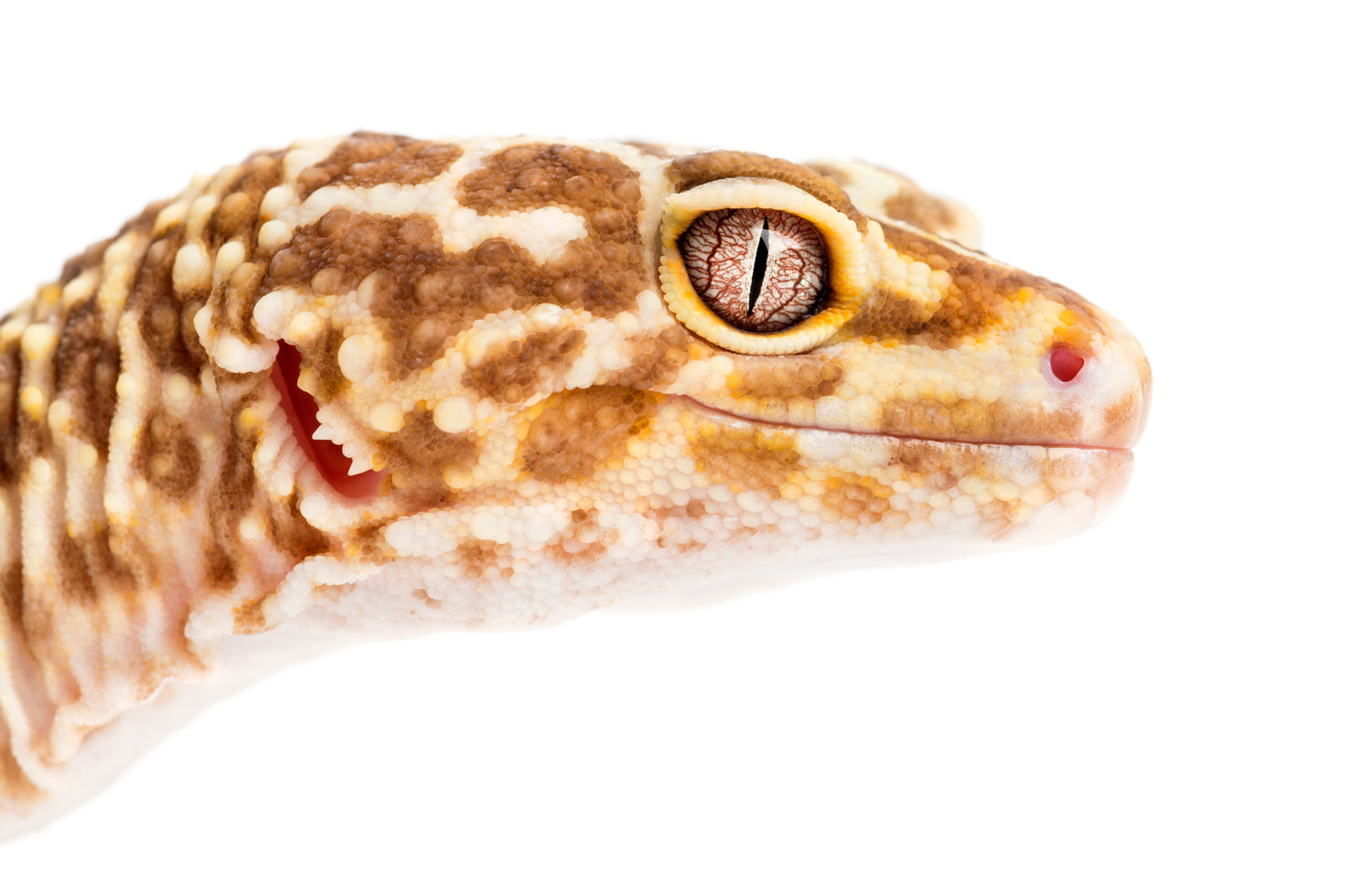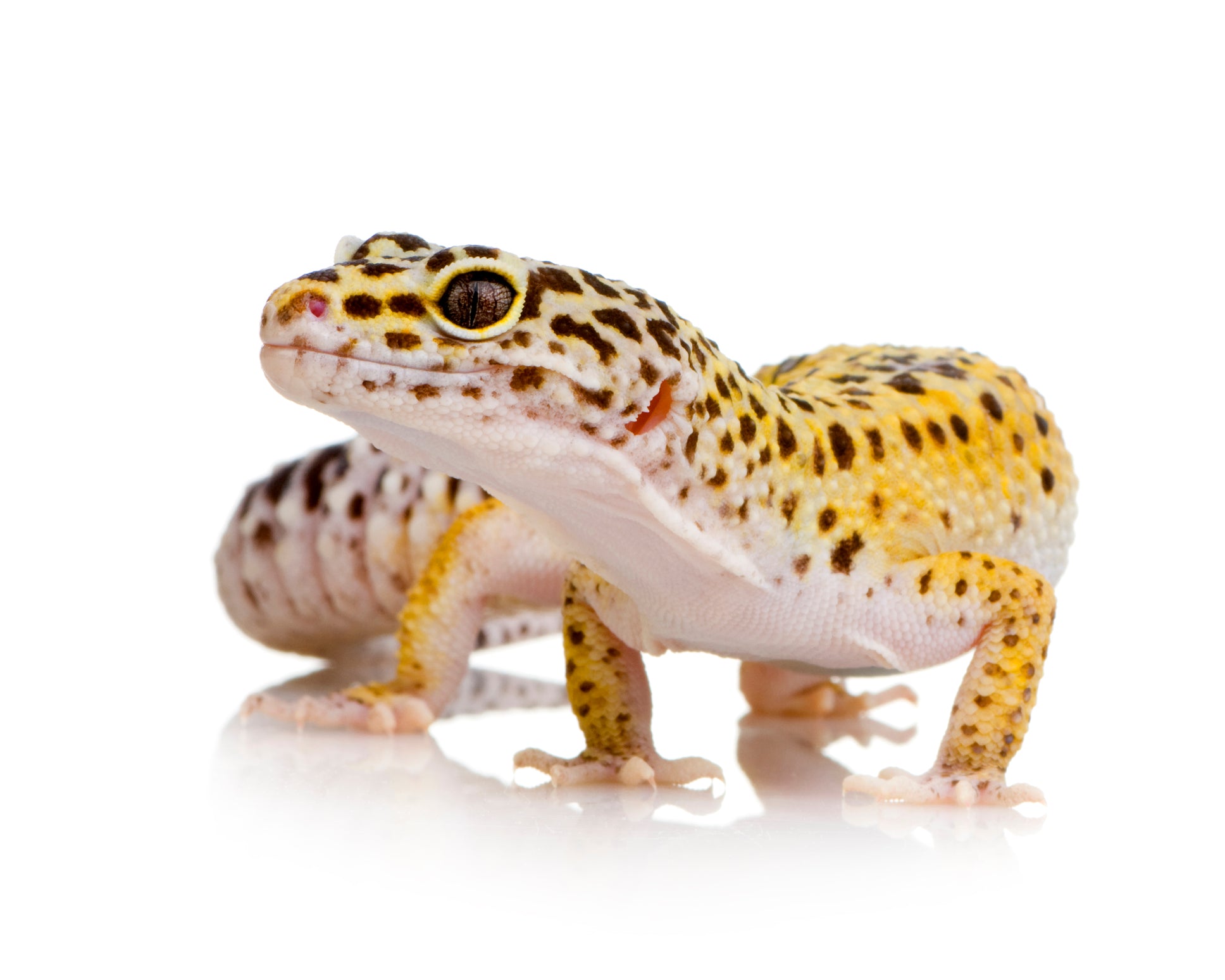Leopard Geckos are nocturnal, however, that doesn't mean that it doesn't matter what lights are used for them in the day. You may have heard that because they are nocturnal that they do not need any kind of lighting, this is not the case, Leos need a particular pattern of darkness and light that mimic their natural habitat in order to stay happy and healthy. You may also have heard that they do not have high demands when it comes to lighting and that they do not need UVB to live, but Leos do use light and heat in their tank and although they rarely "bask" as do other reptiles, they still use UVB to metabolize calcium and synthesize vitamin D3.
When a lot of people hear that Leopard Geckos are nocturnal, which is true, they often assume that this means they do not require any sort of lighting inside their tank, this is very much so not the case. One of the first things to consider is the fact that there is no daytime without a nighttime to follow and Leos are perfectly aware of what time of day it is, even if they are sleeping during the day. They still know how to tell night from the day and depend on being able to do so for their health and wellbeing.
Also, Leos are not completely nocturnal, they are actually crepuscular which means they are actually most active at dusk or at dawn when the light is dim, although their activity does extend into the night, it is not when their activity begins as it does with a truly nocturnal species. They maintain an accurate internal clock as long as they have a proper routine of day and night intervals.
What Lights Do My Leopard Gecko Need?
- Incandescent clear heat bulb for daylight.
- T8 to T5 UVB fixture with a 5-6% (5.0 if Reptisun) bulb.
- A ceramic heat emitter bulb or a heating pad for nighttime heating.
- (Optional) A red, blue, or black light is able to be used for watching your gecko if you need to.
- A thermostat and a timer to control the heating and lights in your setup.
Alternatively, instead of the separate daylight heat bulb and UVB fixture some people use a mercury vapor lamp, this emits UVA, UVB, and heat but it is speculated that this does not provide an adequate amount of UVB for some reptiles.
What Temperature Should My Enclosure Be?
Your Gecko needs a basking spot, a warm side of the tank and a cool side of the tank during the day. that needs to be between 88-92°F when it is their daytime cycle, the air temperature should be around 80-83°F. The cool side of the tank should go no lower than 70°F but ideally can sit at around 76-78°F. You may need to use an under tank heater to achieve and maintain the correct gradient of temperatures that you need.
What Light Do I Use In The Daytime?
Since the Leopard Geckos native part of the world is the Middle East you need to provide a routine that will mimic the day/night cycle relative to that climate. This is how it should look:
Summer (6 months): 14 hours of daytime and 10 hours of nighttime
Winter (6 months): 12 hours of daytime and 12 hours of nighttime.
In order to make the transition between seasons more realistic, it is best for you to slowly reduce or increase the intervals by 15-30 mins per week, for a period of 4-8 weeks, this will allow your Leopard Gecko to adjust properly to the new season.
Using a timer will allow you not to worry about having to turn the lights on and off yourself. It is safer to get one made by a reputable company to reduce the risk of anything shorting out when you're not around. Zoo Med is a good producer of these products as is Exo Terra.
Can I Use Natural Light Through A Window?
One of the issues with this is overheating, it is difficult to control the temperature of your tank when you cannot regulate the light source. Given that the weather and temperature is changing constantly and you need to maintain temperatures in the tank this makes it extremely hard to do so. If your outside weather mimics that of their native environment in the middle east then your Leopard Gecko may be better off than if it does not, but unless you reside there then this is unlikely.
Another thing to bear in mind is that glass filters out all usable UVB so you are not able to use any light that comes through clear plastic or glass to provide your Leopard Gecko with any UVB that will help them to synthesize vitamin D3 and metabolize calcium.
In conclusion, considering that you would still need your own heat source you could regulate, the outside light would throw your temperatures, as well as the fact that you would still need a UVB source this makes using a window as lighting and heating for your tank harder than just using your own lighting and heat source without taking into account the temperature changes that will occur from the natural light. So it would be best to not rely on a window for help in lighting your Leopard Gecko's enclosure.
What Specific Types Of Light Are Best?
Their lights can be divided into four main categories, we shall explore each one:
Incandescent Daylight Lighting
Incandescent bulbs are any bulbs that are heated to produce light. Since all visible light emits some UVA, in varying degrees, these will always be a source of UVA as well as heat. These also help to regulate the day/night cycle due to the light being visible which is why it is best to use a visible light source, over a heat source that emits no light such as a ceramic heat emitter.
There are several reptile branded bulbs that can be used for this purpose, and these work just great. However there are other options available such as the halogen flood lamp bulbs that are more cost-efficient than the reptile branded ones, some owners have also found these to be more reliable but there is no factual evidence of this.
UVB Fluorescent Tube Fixtures
UVB Fixtures and lamps come in many different brands and types. It has been proven by various studies that the most effective type of fixture that provides artificial UVB for reptiles, in general, is the fluorescent tube UVB fixture, these come in a long fixture with a long tube bulb and they provide a good gradient of intense UVB over a large surface area. The two types used for reptiles are the T8 and the T5. T8 has been around for longer and is a lower wattage than the T5, with certain reptiles these need to be installed inside the tank but the Leopard Gecko is not one of them since they do not need as intense UVBas other reptiles, like bearded dragons.
Leopard Geckos need a bulb that is 5-6% strength, or if using a Reptisun bulb, then a 5.0 is the equivalent to the 5%. The Zoo Med Reptisun, Arcadia or the Zilla brands are the best for fixtures and for bulbs, but there are multiple brands on the market you can use. The most important as[etc is the bulb which you want to make sure is reptile branded and the correct strength. It is also recommended that you replace it every six months as UVB bulbs lose their strength over time.
Ceramic Heat Emitters
Ceramic bulbs emit heat but no light so are made to not disturb reptiles when they need to be in the dark. A ceramic bulb is necessary only if your tank temperatures dip below 65°F on their nighttime cycle, they do need a cool-down period so you don't want the tank to get as warm at night as it does in the day or they can get very stressed out and this can lead to parasites and other illnesses. When using the ceramic heat emitter you do not want temperatures to get above 75°F on their nighttime cycle. Good brands of ceramic bulb are Zoo Med, Flukers, and Zilla.
If you are using a smaller tank then you may find a ceramic bulb too intense, so you can use a heating pad instead, just ensure that the same temperatures apply.
Thermostats And Timers
Thermostats are necessary for controlling temperatures in the Leopard Gecko's terrarium, they work by measuring the temperature and switching heating devices on and off depending on what they can measure. If it gets too hot they will turn the heat off until it reaches a certain temperature, then turn it back on once it reaches a temperature where it needs to warm the tank up again. Good brands of these are Zoo Med and Exo-Terra.
A timer doesn't measure temperature but does turn lights on and off at a certain time that is determined by the owner. Very useful for safety and general ease. Good brands are Zoo Med and Exo-Terra.
UVA/UVB all-in-one mercury vapor lamps
Mercury vapor bulbs are an all in one option that can replace the incandescent heat bulb and the UVB fixture as they provide both UVA and UVB spectrum lighting. They are a more cost-effective option but they do not provide the gradient of UVB that a fluorescent tube fixture will. These come in several wattage options, 160 watt is usually suitable for most tanks but if the temperature seems off then you may need to adjust the wattage you are using. Be aware that these will not work in conjunction with a dimmer, but they will work with your thermostat and timer. Solar Glo is the best brand to use for mercury vapor lamps.
Measuring Temperature And Humidity
It is absolutely vital that you effectively measure your temperature and humidity to ensure that they stay in the right range. The correct temperatures are listed at the top, but the humidity of your tank needs to be between 30-40% as a general rule in their enclosure. This does not count their moist hide which needs to be maintained with a humidity of 70-80%.
In order to measure these you will need a high-quality brand of thermometer and hygrometer. Ideal thermometers to have are an infrared temp gun for measuring the spot basking temperatures, the air temperatures will need to be read with a probe thermometer. The hygrometer will be used to measure humidity and if you measure the humidity too low or too high then steps will be needed to be taken depending on which one is measured. the ideal brands to use for the thermometer are Zoo Med for the probe, for the temperature gun it will vary as these are not made to be used for reptiles but for other things like barbecues.



Leave a comment
All comments are moderated before being published.
This site is protected by hCaptcha and the hCaptcha Privacy Policy and Terms of Service apply.